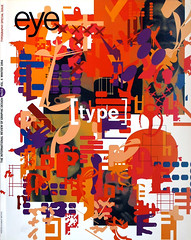Winter 1994
Urgent images
various designers
Graphic Thought Facility (GTF)
Tomato
Paul Elliman
Angus Hyland
Sylvia Gaspardo Moro
Reviews
Technology
Urgent Images: The Graphic Language of the Fax
By Edward Booth-Clibborn and Liz Farrelly Design: Angus Hyland and Sylvia Gaspardo Moro Booth-Clibborn Editions, £35Is there a more unstable and ephemeral medium for creative communication than thermal fax paper? As if to confirm that the fax machine’s Demoiselles d’Avignon have already faded away – if they ever existed – most of the projects featured in Edward Booth-Clibborn and Liz Farrelly’s Urgent Images: The Graphic Language of the Fax (Booth-Clibborn Editions, £35.00) are very recent. In the absence of archival examples, many of the projects have been created specially for the book.
Four hundred numbers were faxed with an invitation to take part. A cast of familiar graphic design names is joined by anonymous pranksters such as ‘The Corporate Slave’ and ‘Clive’ of Middlesex University, who faxes shots of a rave video (you probably had to be there). Some projects, such as Paul Elliman’s ephemera collected while travelling are too personal or obscure to communicate very much in this context. In Urgent Images’ wittiest contribution, Erik van Blokland sends ‘Instructions for a healthy faxlife, Don’t ever use a cover,’ he advises, ‘those are for office weenies.’
While the book is engagingly designed by Angus Hyland and Silvia Gaspardo Moro, its stylisation denies the fax’s inherent coarseness, offering instead a tastefully aestheticised version of the medium. The faxes are rendered not in their original (dull?) mono, but in lush silver and beige on bright white paper. Perhaps there was no alternative to cropping graphic details, but in doing so a sense of the imagery’s place within the unfurling roll gets lost. Some of the most unruly and paper-consuming projects can in any case be hinted at. Graphic Thought Facility offer a poor man’s Bayeaux Tapestry, while Tomato, we learn, covered a hillside with a 100-metre roll which they proceeded to video – all we get to see is two pages of thermal blurs. Pursuing the fax machine’s textural possibilities to the logical limit, the book concludes with a series of designs for fax wallpaper.
It may be that creative faxing really is an international phenomenon on a scale to rival related areas such as photocopy art and the mail art network. But the examples shown in Urgent Images, though entertaining, don’t make the case conclusively. That said, the book follows its own democratic principles by encouraging the reader to reply in kind.
First published in Eye no. 15 vol. 4, 1994
Eye is the world’s most beautiful and collectable graphic design journal, published for professional designers, students and anyone interested in critical, informed writing about graphic design and visual culture. It is available from all good design bookshops and online at the Eye shop, where you can buy subscriptions and single issues.

